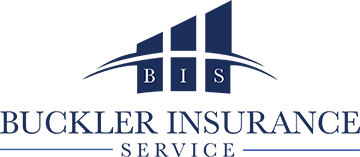Purchasing insurance can be a confusing process. You are often asked a bunch of question and it can be hard to understand how they affect the final premium you are offered. Here we wanted to make that process a littler clearer when it comes to cottage insurance.
We’ll look at the biggest factors that affect your insurance cost. Not only will this allow you to better understand the price you’ve been given but you can also work out ways to save a little money. All you need to do is read on to find out more.
Location
As with standard home insurance, one of the biggest factors affecting the cost of your cottage insurance is where it’s located. This is because some areas are higher risk than others. Good examples of this are cottages that are on floodplains or where there is a greater risk of wildfires.
While those are the major factors when it comes to location, other features are taken into account, such as the quality of road access, distance to medical services, and proximity to a fire hydrant.
A risk assessment will be completed on the cottage, and the higher the risk, the more you will pay. For specific perils such as water damage from flooding, you’ll likely need to purchase additional coverage, as it’s unlikely to be covered in a basic policy.
Property Value and Features
Perhaps the most obvious factor affecting the cost of cottage insurance is the value of the property. The more expensive the cottage, the more costly the repairs would be to the insurance company. This only increases if your insurance covers a total loss.
Along with the basic valuation, they will also consider the features of the property and how they affect the risk of a claim. This includes the construction materials, the age of the property, and any additional structures you have.
Properties with more extensive amenities may also need higher coverage limits. This includes the likes of boathouses, guest cabins, and docks. Finally, other features can also be deemed high risk such as fireplaces and pools.
Insurance Coverage and Policy Limits
As we touched on there, you can get different types of coverage when it comes to cottage insurance. The type of coverage you choose can have a significant on the cost of cottage insurance. Basic coverage often includes protection against fire, theft, and liability, but you may need much more than that.
You’ll likely want complete coverage for the structure of the property and be able to insure it in the event of a total loss. It’s also likely you’ll need added insurance for the likes of watercraft and detached structures.
Added to this, you also need to think about policy limits and deductibles. Your policy will have a maximum amount that the insurer will pay in the event of a claim. The higher the policy limit, the more expensive the insurance. The deductible is the amount you pay upfront to start a claim. The lower the deductible, the more you’ll pay for the premium.
Security Measures
Security measures can also have an influence on your premiums. Installing security systems and smoke detectors can be a great idea to not only lower your insurance but also help to keep the property safe.
As mentioned above, features such as proximity to a fire station can impact your rates. While you can do little about the distance to fire and medical help, it’s wise to reduce your risk by enhancing your security and safety measures.
Usage and Seasonal Occupancy
How the cottage is used will also have an impact. Some cottages are occupied year-round, while others are purely seasonal. Properties unoccupied for long periods are at a greater risk as damage from pests, vandalism, burglary, and frozen pipes are all more likely.
If you rent out the property then you’ll almost certainly need specialized insurance coverage as it won’t be part of a basic policy. Providing accurate information about the usage is vital to prevent any issues when making a claim.
Claim History
As with any type of insurance, your claim history will also be taken into account. Properties that have been subject to frequent claims or significant losses are also going to be deemed a higher risk. And, as always, a higher risk means a higher premium.
If you’ve made claims in the past and are renewing your cottage insurance, this could be why the price has increased. Often it makes sense to avoid making smaller claims as they you can end up spending more money over time.
Insurance Providers and Discounts
We’ve talked a lot about risk here. However, each insurer is going to evaluate risk differently. Due to this, it’s a good idea to check with a few insurance companies to find the best quote. If that sounds like hard work, then an insurance broker will happily find the best insurance for you.
Added to that, insurers will often give you discounts that can help to reduce your costs. These can include bundling policies together, loyalty discounts or reduced costs for advanced security features. Those who take advantage of such offers can enjoy lower premiums.
Final Thoughts
Cottage insurance is vital for anyone with a seasonal property, but premiums can vary significantly from one cottage to the next. Knowing the factors above will help you better understand the premium you’ve been offered.
As we’ve seen, there are also ways to lower your insurance coverage, such as installing security systems or bundling policies together. If you are in need of a cottage insurance quote, then contact Buckler Insurance today and we’ll work hard to find the best price for you.






